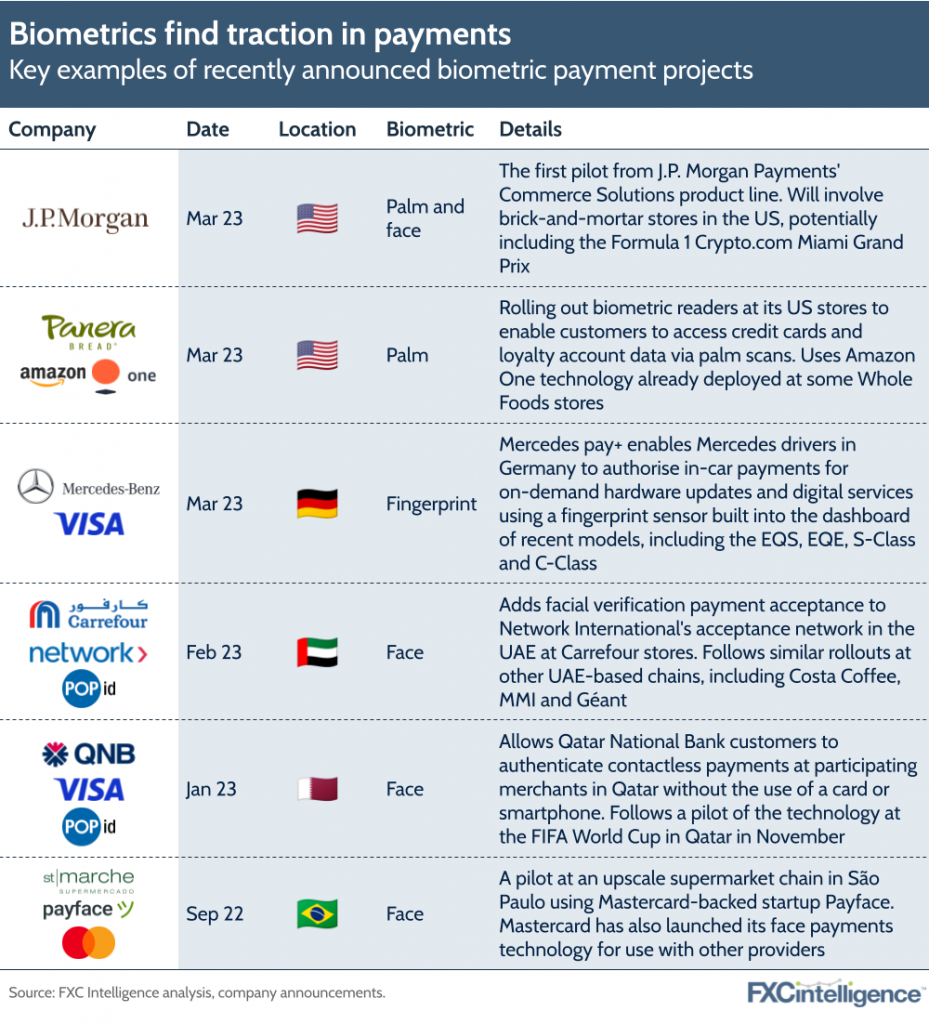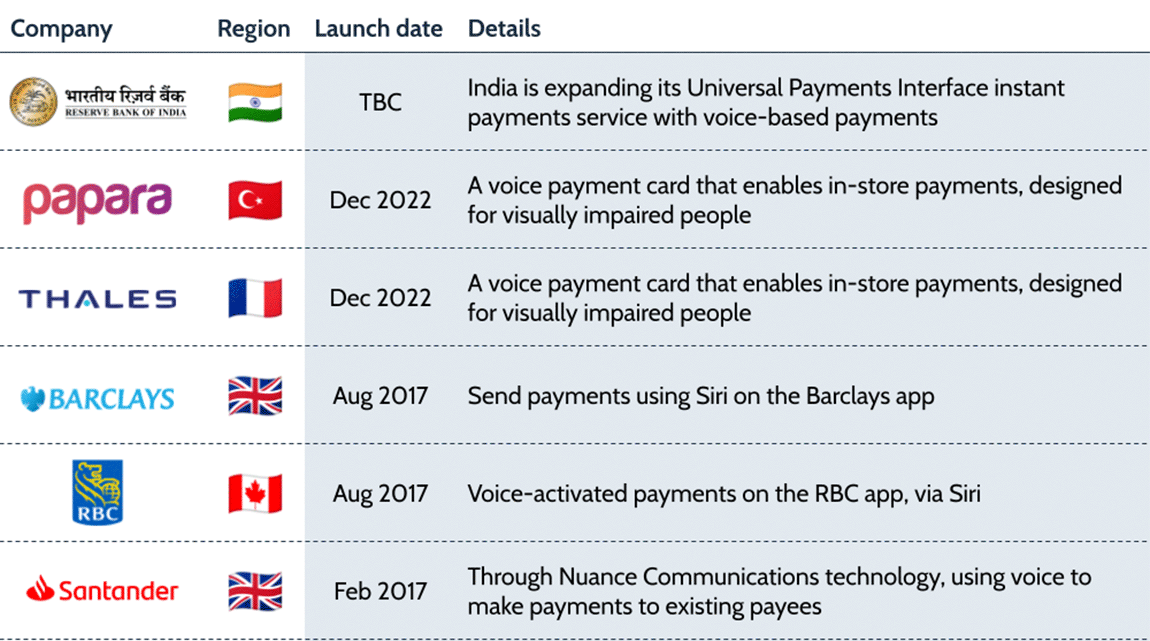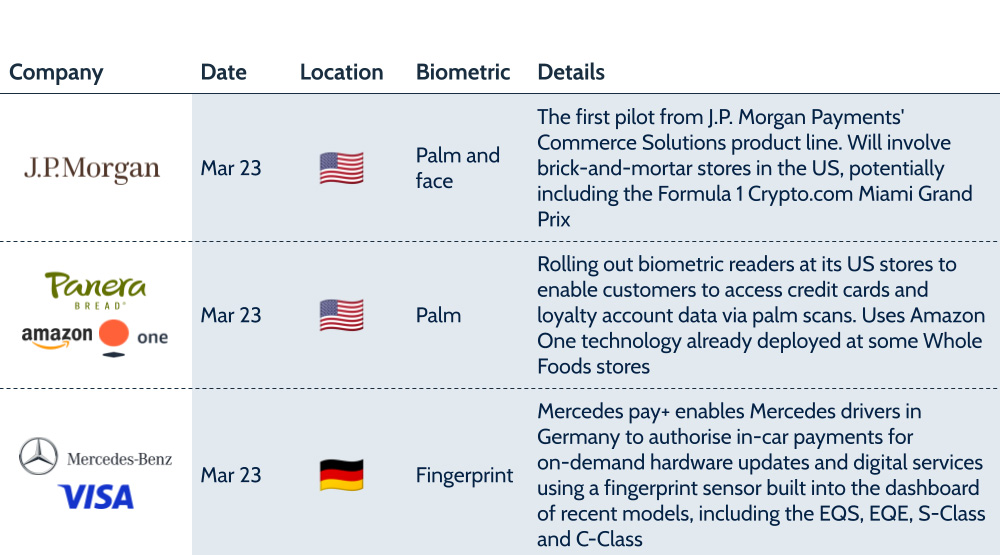Biometrics at the point-of-sale were solely the subject of science fiction for many years. But a number of recent initiatives have seen growing numbers of customers able to make payments with nothing more than a scan of their face, palm or fingerprint.

Biometric payments are intended to increase the ease of contactless payments, removing the previous need for a card or smartphone and enabling customers to seamlessly move through the checkout process. While the technology has been around in some form for a while, it is only in the last year that we have seen it begin to gain notable ground in payments.
Part of this is the provision of off-the-shelf solutions, which have increased in availability over the last 12 months. Generally speaking, there are three components to a typical retail biometric payment: the merchant, the payment processor and the biometric technology provider. In some cases, such as with Amazon One and J.P. Morgan Payments, the latter two are handled under the one solution. Amazon One is a development of technologies first piloted in Amazon’s own stores, including its Whole Foods brand, while J.P. Morgan is currently piloting the technology as part of a new suite of solutions.
However, in other cases a payment provider has partnered with a biometric technology provider, such as the UAE’s PopID. Both Visa and Mastercard have also partnered with providers on such technologies, although both have also developed in-house biometric solutions for payments.
Critically, many of the recent implementations of biometrics seek to make PoS part of an omnichannel solution. While for customers biometric payments add ease, they also tie in-person purchases to the digital account that customers create to add their biometric data. This enables payments to be tied to a wider rewards account, as well as paired with those made online, via apps and through other digital channels.
While there is growing adoption of biometrics for payments, there remain concerns around privacy that may make adoption inconsistent, particularly in the West where these concerns have been more pronounced. Projects currently underway will provide valuable insights into how much tolerance the public have for biometric-based payments, particularly around the types of biometrics that are considered more acceptable.
However, with phone-based fingerprint verification for digital payments now widespread on both Apple and Google operating systems, it’s clear that there is consumer interest in the technology and its benefits.


